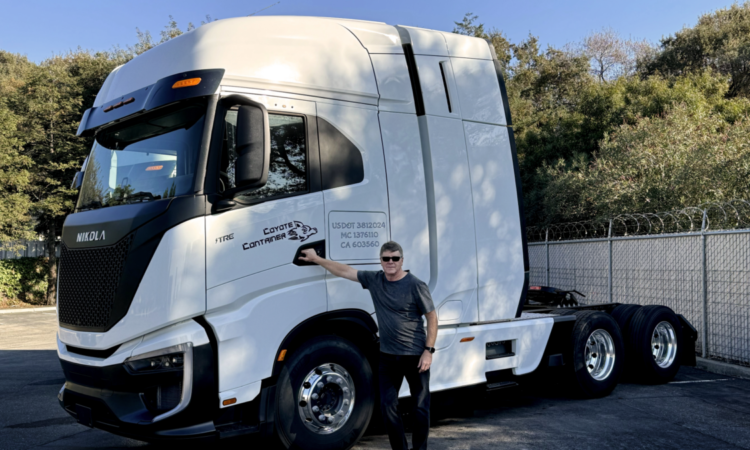Shareholders throw company another lifeline by approving reverse stock split
Nikola has delivered 75 hydrogen-powered fuel cell trucks to customers. It has an order bank that should begin to produce meaningful revenue. Now it is producing statistical evidence that hydrogen-powered trucking is not just for show.
At two industry conferences this week and in data shared first with Truck Tech, Nikola revealed it has:
- Completed 1,666 hydrogen fill-ups at three mobile refuelers in Coolidge, Arizona, as well as Ontario and Long Beach, California.
- Dispensed 60.54 tons of hydrogen.
- Averaged a fill time of 22.2 minutes in Long Beach and 23.5 minutes in Ontario. That is slightly longer than the 10-15 minutes for a diesel fill-up but much faster than recharging a battery-electric truck.
- Averaged overall uptime of 95.4% including hydrogen station downtime. The trucks themselves operated 92.9% of the time.
- Better fuel economy performance than expected
- Nikola’s Class 8 Tre fuel cell electric vehicles averaged 8.13 miles per kilogram of hydrogen on demonstration runs. That’s markedly better than the expected 7.1 or 7.2 miles per kg. A Nikola Tre with five 14-kg hydrogen tanks — a total of 70 kg — can cover about 500 miles. They don’t go that far because some hydrogen always remains in the tank.
- Customer trucks used on regular routes average about 7.4 miles per kilogram, Christian Appel, Nikola’s chief engineer, told me.
- “In specific applications, we even see 8 or 8 ½ miles per kilogram,” he said. “That translates to better economics on the TCO [total cost of ownership] but also to a higher [driving] range.”
- The correlation between the energy in a gallon of diesel fuel, and a kilo of hydrogen is close. A gallon of diesel has about 37 kilowatt hours of energy. A kilogram of hydrogen has about 33 kWh. Traveling 8.1 miles per kilogram of hydrogen is the diesel gallon equivalent of 9.1 mpg. The typical diesel truck averages 6.3 mpg, according to the North American Council for Freight Efficiency.
- Driver training and behavior helping reduce total cost of ownership
- Driver training about differences between diesel and electric trucks impacts the better-than-expected results, Appel said. That’s especially true for regenerative braking that returns friction energy to the battery.
- “We have different levers of regen. The most efficient strategy for drivers is [keeping it] at the highest level and then do one-pedal driving. But that’s not how a lot of drivers drive,” he said.
- The average length of haul during demos was 187 miles. The Tre on a full tank of hydrogen can cover 400-450 miles.
- Out-of-control hydrogen cost out of Nikola control
- One thing Nikola cannot control is the price of hydrogen, most recently selling at north of $32 a kilo. That is far more than what it costs to make. Appel would not say if Nikola is discounting hydrogen for its customers.
- “For us it’s really about working with the fleets and making this work,” he said. “It’s about scaling this ecosystem, getting the trucks out there [and] creating the demand, which will drive the price of hydrogen down.”
- Source


